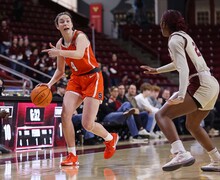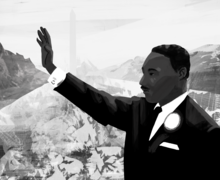Shields: Black women portrayal in media shows stereotypes
On Feb. 12, The Women’s Media Center (WMC) released its annual Status of Women in the U.S. Media Report. The report summarizes women’s depiction in film and television as well as their role in determining its content. Among a slew of statistics, the most upsetting were those on black women’s depiction in the media.
The WMC took a sample of black and white women who read Essence Magazine. The readers decried portrayals of black women in the media, based on the survey. It asked them about the types of black women they saw in the media. Eighty-five percent of survey respondents found that they regularly see unmarried “baby mamas” in the media, but 41 percent see “young phenoms,” “girls next door,” and “modern matriarchs,” in real life. White respondents said “angry black women,” “baby mamas” and “uneducated sisters” were the women they most encountered in real life.
Women aged 18–29 were reported as more likely to know about and like the negative characterizations of black women. This is because they have more exposure to digital media, where these characterizations run rampant. Those who approved of these negative stereotypes were also likely to find lighter skin and straighter hair more beautiful. This study demonstrates that there is a pervasive force portraying unrealistic and negative examples of black women without there being anything positive or inspirational to balance it out.
Black women made their first television debuts playing “mammys” and caretakers. Today, their roles have evolved to “baby mamas” and uneducated jezebels. Black women dominate the screen but only when it comes to reality shows and music videos. Aside from “Scandal” and “Being Mary Jane,” I cannot think of many shows that depict a black woman in the lead role who is strong and independent. Black women are usually sassy, loud and sidekicks (see: Loni Love from “Chelsea Lately” or Nene Leakes from “The Real Housewives of Atlanta.”)
The only black women who have the opportunity to deviate from this role are usually racially ambiguous or “mixed.” This story is told and retold so many times that it has become ingrained in everyone’s heads. Little black girls learn early on that in order to be beautiful or important, they have to be white or undertake white characteristics. If they cannot, black girls have to simply accept being sidekicks or second-class citizens.
This also affects the way others see black girls. Men and people from other races are receiving the same messages that black girls are, and they are receiving these messages at early ages as well. This creates pre-conceived notions of black women that create standards that are impossible to live up to and pigeonholes a whole minority. Black women face a unique form of stereotyping that combines their race and their gender, increasing the pressure they face.
These are not just numbers on a page. These statistics are actual people. Black women are facing a lack of positive representation in the media and control of media sources. This is important because the shows we watch, books we read and music we listen to are more than just media — they shape our society. The media shapes the way we think, feel and act towards others and ourselves.
Women, especially black women, have little control of the behind-the-scenes aspect of the media. There seems to be a media pipeline for women, leading most of them to public relations and advertising fields. This is so extensive that half of the advertising agency workforce is made up of women. The only problem is that women do not make up positions of power; 68 percent of bosses are men. If black women have no voice or input in the media, our representation is completely left up to others and that is a scary thing.
Mandisa Shields is a freshman newspaper and online journalism major. Her column appears weekly. She can be reached at meshiedl@syr.edu and followed on Twitter @mandisashields.
Published on February 23, 2014 at 11:35 pm





